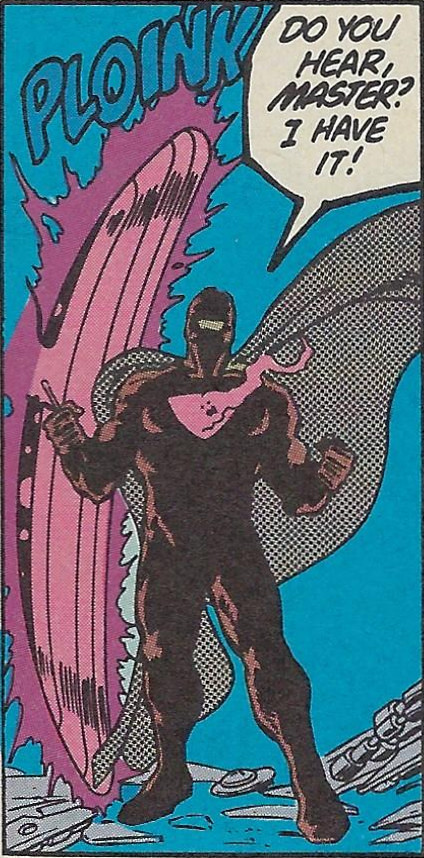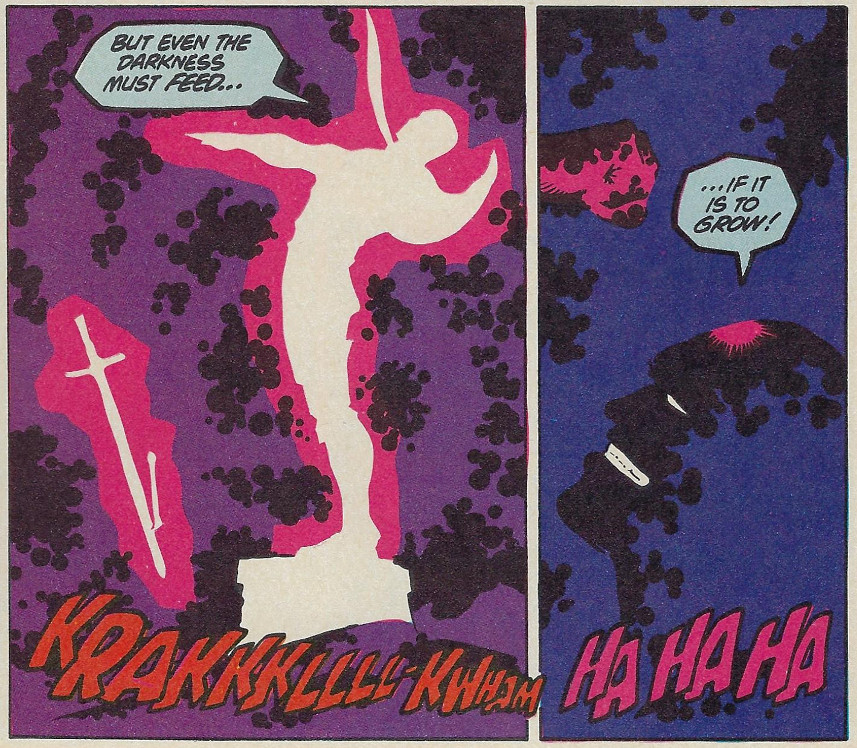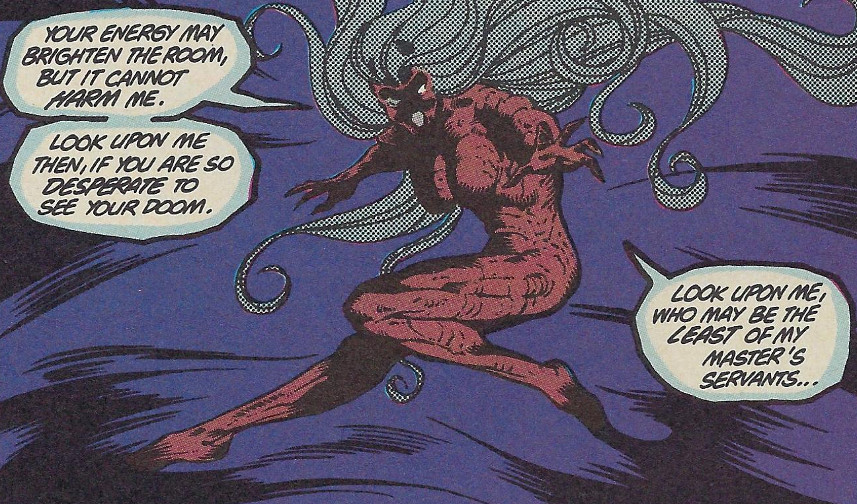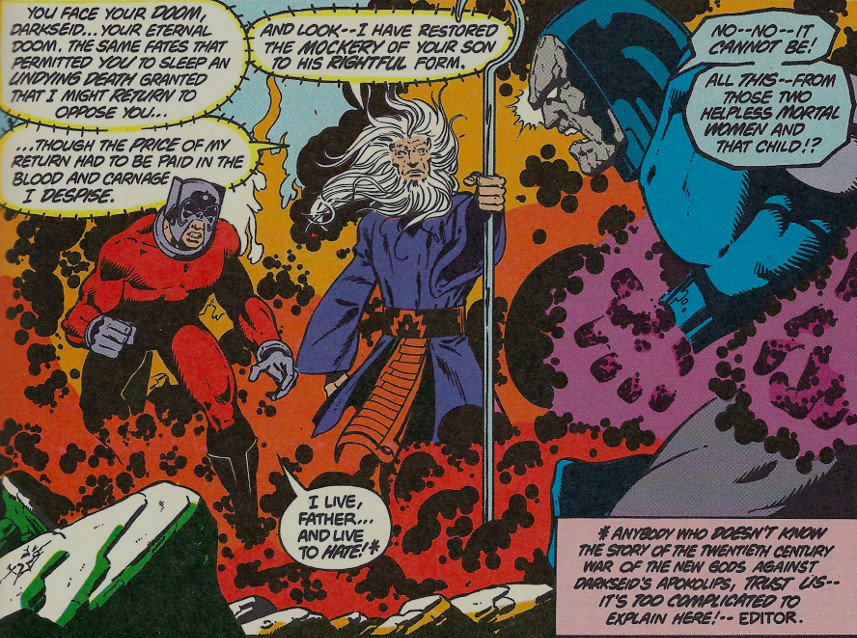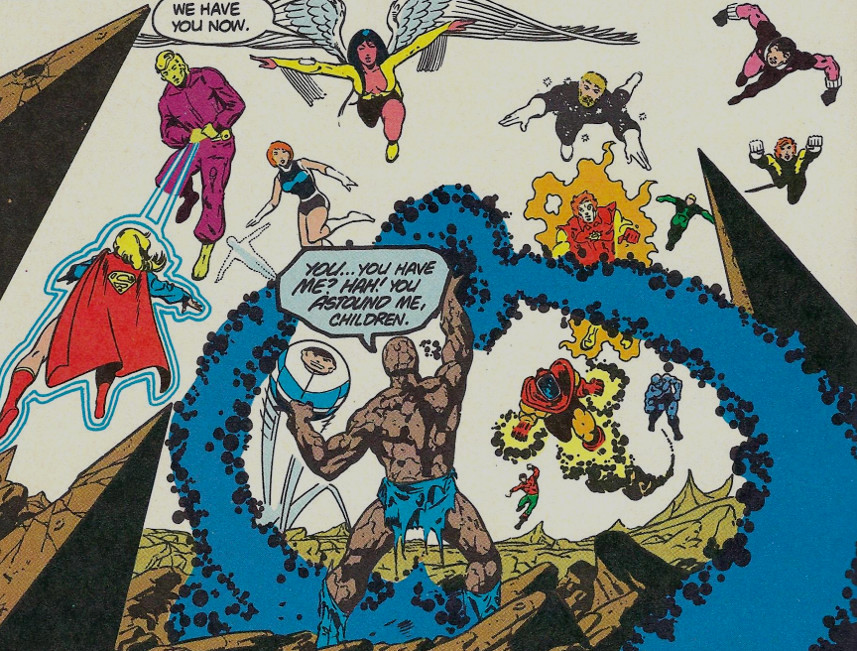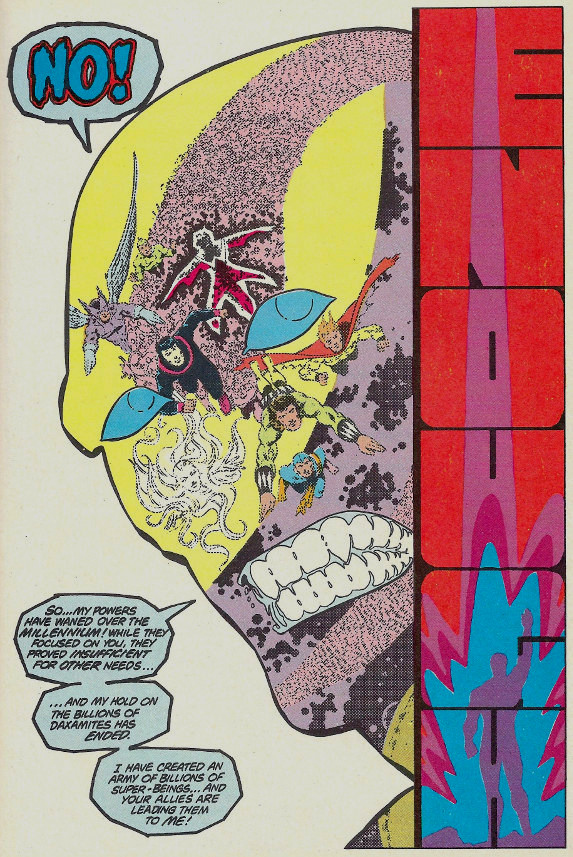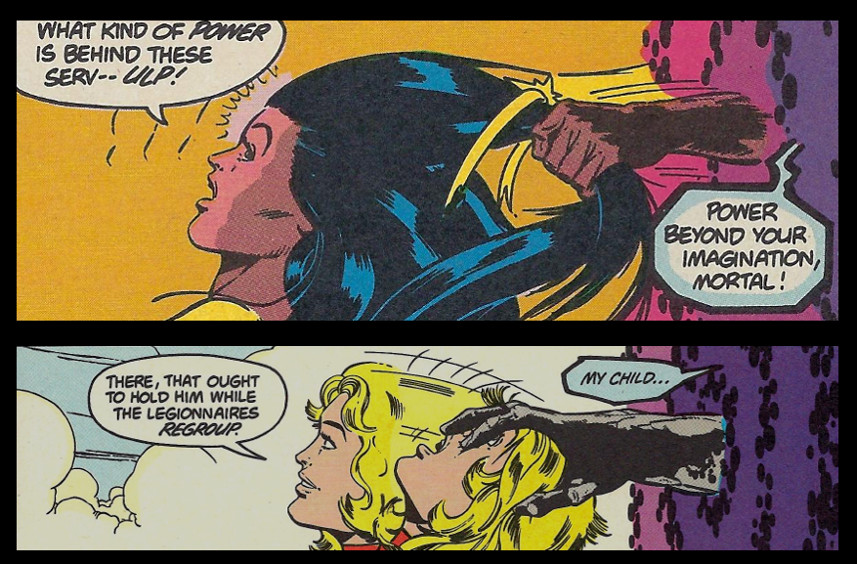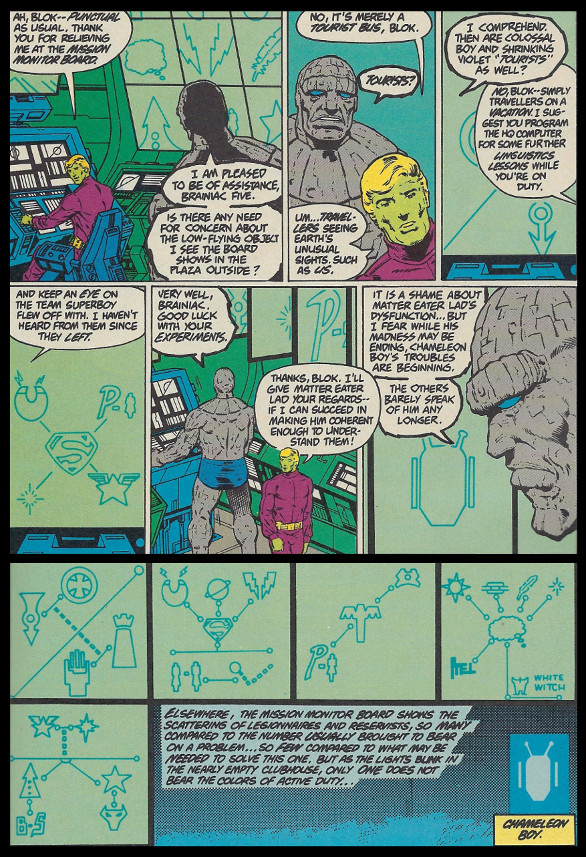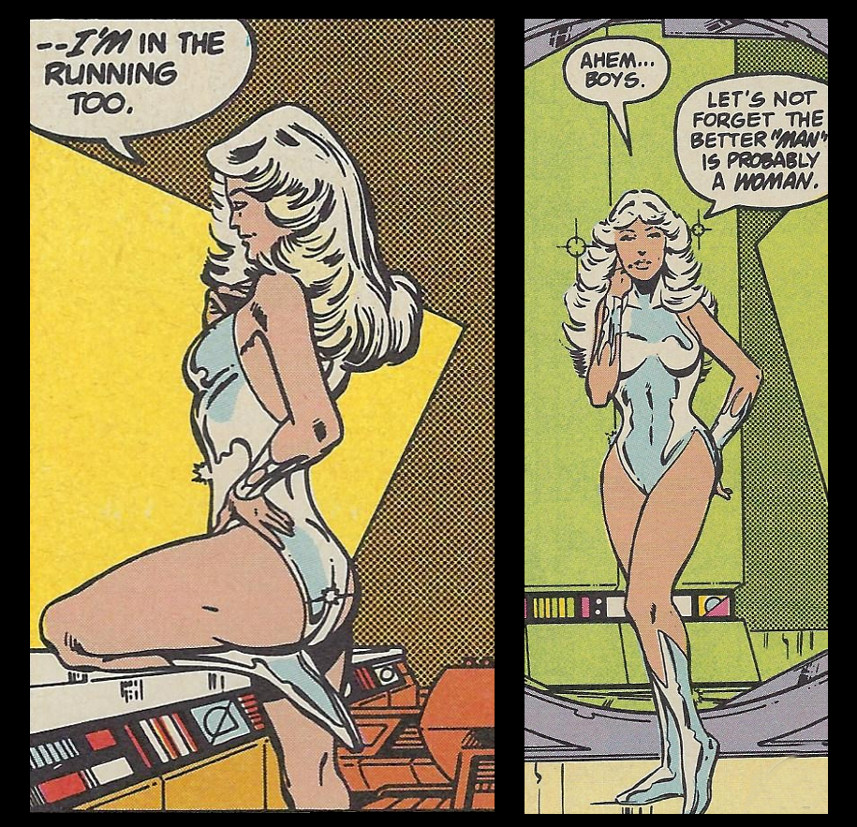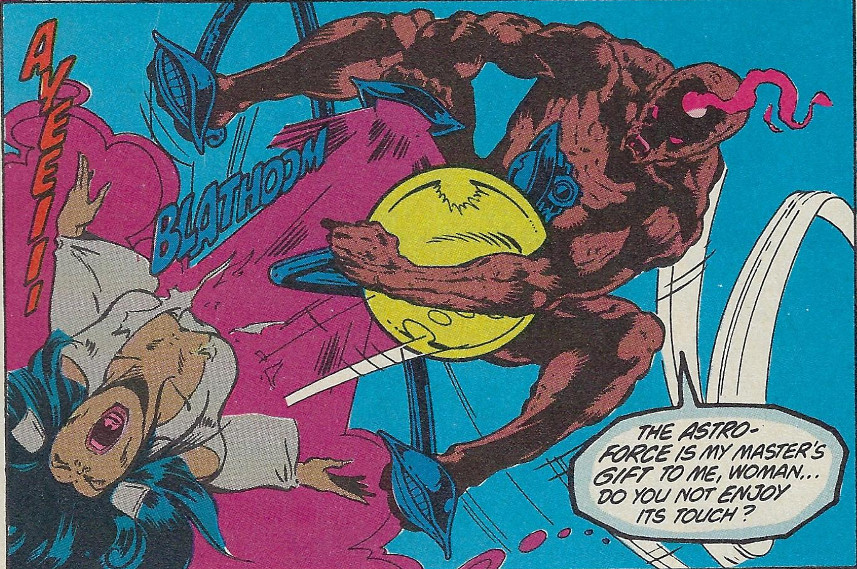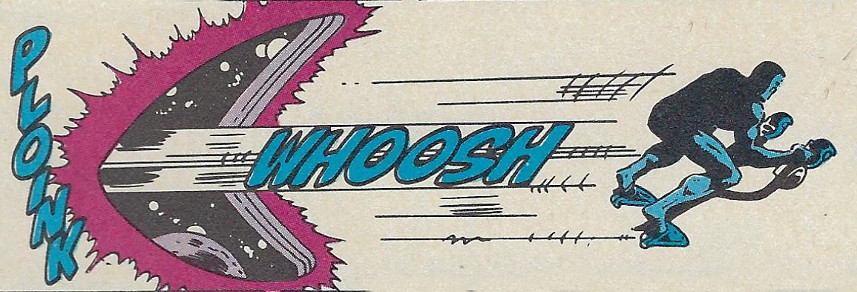It was the fall of 1982. An early childhood captivatingly watching Superman, Wonder Woman, and Batman on the television had done little to shape my comic book choices. By my early teens, I had decidedly fallen into the Marvel camp for my reading pleasures. But here in the fall of 1982, I haunted the local newsstands looking for one title more than any other – The Legion of Super-Heroes.
I had always had a soft spot for the Legion. One of the earliest comics I owned was Superboy #210 (which eventually is renamed Superboy and the Legion of Super-Heroes and then, finally, just the Legion of Super-Heroes). The lead story, which was Legion of Super-Heroes tale, was one of my favorites. Nonetheless, the series just didn’t stick. Sure, I bought issues from time to time, but it just didn’t capture my attention every month. That was until Paul Levitz (script), Keith Giffen (pencils), Larry Mahlstedt (inks), and Carl Gafford (colors) started their Great Darkness Saga.
At the risk of using an old cliché, this storyline has it all – fun, action, horror, nobility, drama, tension, and style. The storyline ran continuously from issue #290-294 with a small prolog in issue #287. In the space of those 5-plus issues, the creative team delivered one of the best storylines in the history of comics.
The storyline centers on the re-awakening of cosmic villain Darkseid after a sleep of nearly a millennium. The brainchild of Jack Kirby, Darkseid was the evil lord of the planet Apokolips, which was continuously at war with the noble New Gods. Their struggle formed the central theme of Kirby’s Fourth World family of titles that ran from 1970 to 1973.
However, neither the Legion nor any but the most careful and astute reader knows who the bad guy is until nearly the end. The creative team manages this feat by adroit writing and cleverly conceived and implemented visuals.
All the reader knows at the beginning of issue #287 is that…
An investigation by two Legion members (Mon-El and Shadow Lass) triggers a reaction from powerful defensive systems capable of staggering even Mon-El’s Superman-level of strength. Reluctantly forced to flee, they fail to witness the stirring of their mysterious enemy.
As the story unfolds in issue #290, the Legion quickly find themselves facing off against Darkseid’s Servants of Darkness, beings whose appearance is obscured
and yet who are
strangely familiar.
Each servant is tasked with retrieving mystical objects such as one servant stealing a wand
while another takes the legendary sword Excalibur.
All these items serve to fuel Darkseid’s ever-growing power.
The Legion is barely able to keep themselves from being killed in their encounters with the servants, as the latter all boast Superman-level power.
Eventually, they capture the weakest servant
and only then do they begin to put the pieces together to understand that the servants are corrupted clones of some of the most powerful entities who ever lived.
Even armed with this knowledge, the Legion can’t stop Darkseid. Once fully revitalized, he learns of Daxam, a world inhabited by a splinter group of Kryptonians who were vulnerable to lead not kryptonite. Realizing he can sway an entire army of supermen to his will, Darkseid invades.
Bending all 3 billion inhabitants to his will, his first command is for them to terraform their planet into a monstrous monument to his godhead
It is only at this point, as the planet is silhouetted against the red sun of Daxam (the final pages of issue #293), that the reader becomes privy to the fact that the villain is Darkseid.
Charged up by the magical artifacts he’s consumed and commanding a 3-billion large army of supermen, Darkseid is on the verge of defeating the entire galaxy. Barely able to divert the least part of his assault, the Legion’s future is bleak. Their only hope lies with a small child summoned to the thirtieth century from the depths of time by a band of sorcerers. The child quickly ages to maturity, revealing that he is none other than Izaya, the High Father of the New Gods, who had kept Darkseid and his minions in check.
Izaya’s first act is to restore one of the servants to his uncorrupted form; the form of Orion, the son and prophesized assassin of Darkseid himself.
Because this Orion clone is not a complete copy of the original, Darkseid is able to defeat him, but at great cost. Sensing that the tide is turning as much of his energy is now drained, the Legion presses Darkseid. In these last hours, even Superman and Supergirl find their way into the battle
enhanced by Izaya with the ability to be a threat even to the dark god.
Despite the pounding he’s taken, Darkseid is still defiant
until he realizes that he has lost his control over the Daxamites and that an immense, super-powered army was heading to destroy him.
Aware that he can’t win, Darkseid retreats from the galaxy, beaten back for the foreseeable future but always lurking on the edges of thought and nightmare.
Well crafted and nimbly paced, the core narrative is enhanced by the side arcs and personal dramas that add the human facets. The Invisible Kid’s apprehension of his first assignment in the face of an enemy so powerful, the ongoing shame of Chameleon Boy’s trial and imprisonment, the impending birth of Lightning Lad and Saturn Girl, and the ongoing rivalry between the members running for election to the head of the Legion are just some of these side arcs that remind us that there are real human beings (or alien beings) whose lives are being affected by this cosmic melodrama.
The creative team added a number of visual details that enhanced the mood. For example, until the final reveal, Darkseid and his servants are always seen in an orange and brown shadow surrounded by pink and magenta and blue coruscating energy fields. This common theme trains the reader to associate the terror of the servants with this look-and-feel much in the way that the moviegoer was trained to associate the ‘dum-um, dum-um’ sound with the presence of the shark in Jaws.
Specific physical acts are also used to convey the brutality of servants and their master. On at least two occasions, the villains, using the ability to warp spacetime, come up behind members of the Legion and execute an attack out of nowhere
Not content with focusing solely on the bad guys, the creative team added visual perks to the Legion’s look-and-feel. One of the more interesting and visually pleasing ones was the Mission Monitor Board, which allowed the member on monitor duty to have a situational report of the various teams.
The green background with cyan iconography becomes almost as interesting to look at as the rest of the storyline and offers the interested reader a sort of puzzle-book activity trying to associate each icon with the corresponding Legion member.
The members themselves were also treated with loving care in their physical appearance. Perhaps the most notable was Dream Girl, whose physical appearance was, shall we say, spared no expense.
Finally, the creative team left small clues, both verbal and visual, as to the identity the identity of the major villain; clues that rewarded the careful reader who tracked them down. Most notable were the subtle indications that one of the servants was Orion. First, Levitz makes a point of slipping in one (and only one) mention of the Astro Force
a power only wielded by Orion. Second, in one small panel, we see the same servant stripped of all the shadows.
The familiar profile of Orion is there to see if one knew what to look for. One more detail, in the same panel, is the use of the ‘PLOINK’ sound effect. In the original Kirby Fourth World and subsequent comics, this space warp makes a characteristic ‘BOOM’ sound and is called, as a result, a boom tube.
These clues were lost on me in 1982 as I had never seen or had heard about the New Gods. Subsequently, I’ve tracked down and acquired back issues and have tried to stay current on new storylines involving the conflict between New Genesis and Apokolips. And, while each of these is interesting, none capture the shear excitement and appeal as does The Great Darkness Saga.






